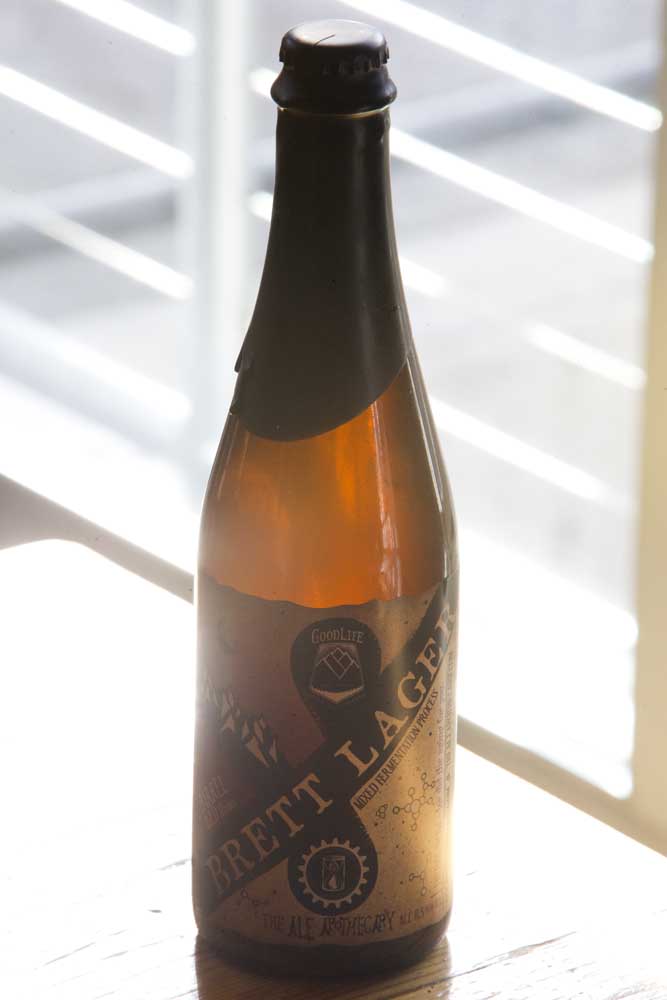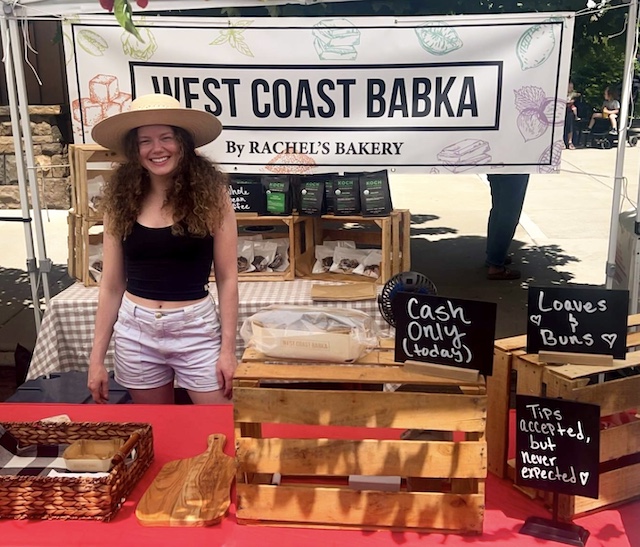Ale Apothecary and GoodLife get together to make Brett Lager
Published 3:53 pm Thursday, February 1, 2018

- Brett Lager aged for 18 months in the barrels with the wild yeast further fermenting and evolving it. (Andy Tullis/Bulletin photo)
October was a good month for GoodLife Brewing Company. The month started with a gold medal win at the Great American Beer Festival for the brewery’s popular Sweet As Pacific Ale. It then followed that up with the release of a collaboration beer, Brett Lager, the culmination of a nearly two-year project with The Ale Apothecary.
The undertaking was a labor of love for GoodLife brewmaster and co-founder Curt Plants, who died in April. Plants had been a fan of The Ale Apothecary since it launched, and long wanted to collaborate on a beer with owner and brewer Paul Arney.
Both breweries had a history of working together. When The Ale Apothecary first moved into the Century Center near GoodLife, Arney needed help receiving materials and equipment.
“For about a year, Curt and the GoodLife team allowed my brewery to ship our grain and bottles to their truck dock because we didn’t have one,” Arney said via email. He also assisted GoodLife with a nitro stout project early on.
When the opportunity to brew a beer together arose, Arney had the idea to brew a wild lager, and in 2015 they started on the project.
“When Curt asked about the collaboration, I immediately thought that this type of beer would be a perfect way for us to unite our vastly different breweries, giving each brewery a rather specific and important role in the development of the beer we were creating together,” Arney said.
They settled on a Dortmunder-style lager for the base beer. The style originated in the Dortmund industrial region in Germany as a stronger-than-average lager and became popular with the industrial workers. It’s not a style often found among American craft brewers, though Full Sail Brewing Company’s Session Golden Lager is one example.
The beer was brewed in GoodLife’s production brewery, where it fermented and cold-conditioned for two months before being transferred into Sokol Blosser Pinot Noir wine barrels. Once it warmed up to ale temperature (around 65 degrees Fahrenheit versus lagering temperatures of 35 to 45 degrees), they added The Ale Apothecary’s wild house yeast culture.
This is a unique blend of wild yeasts and bacteria that Arney cultured and developed at his small-batch brewery west of Bend. It’s the same culture that you taste in his flagship ale, Sahalie.
The lager aged for 18 months in the barrels with the wild yeast further fermenting and evolving it. At bottling time, they krausened the beer with fermenting Sweet As, a process by which fresh yeast and sugars from the fermentation help to develop natural carbonation in bottles. They then conditioned the bottles for an additional three months before release.
GoodLife shared a bottle with me to review. When poured into a glass, the beer appears golden orange in color and fairly hazy. With bottle conditioning, a layer of yeast settles to the bottom of the bottle, which can be agitated when pouring to present such a hazy or cloudy appearance.
The aroma is characterized by the funky barnyard signature of Brettanomyces yeast — the “Brett” in the name — and overflows with fruit. I found notes of pineapple, pear, grapefruit, stone fruit and wild berry, with a hint of sour tang, all overlaying a crackery malt body.
A complex interplay of flavors greets the tongue. The beer starts and ends dry, with impressions of forest floor, peppery spice, bready malt, and tart pineapple juice rounding out the signature funkiness from the Brett yeast.
It would be an excellent beer to pair with a variety of foods.
When it came to crafting Brett Lager, the concept of “local” played a major role. “Our Brett Lager Collaboration is about as local as you can get,” said GoodLife owner Ty Barnett. “Starting with two breweries right next door to each other with Ale Apothecary opening a tasting room during the making of this collab.”
They sourced the malt from Mecca Grade Estate Malt, based out of Madras, which Arney also uses exclusively in his beers. The hops were from Woodburn, in the Willamette Valley. The Sokol Blosser Winery, source of the barrels, is located in the wine country near Dundee and McMinnville. In fact, all ingredients and components but the glass bottles themselves were local to the state.
The beer plays well to both breweries’ strengths, and the effort they put into it is evident when you drink it. Dedicated to the late Plants, Barnett said in the press release, “Sadly, Curt was never able to try the final accomplishment. As you drink this delicious brew, (say) cheers Curt and Paul for making this truly one of a kind beer!”
— Jon Abernathy is a Bend beer blogger and brew aficionado. His column appears every other week in GO!






